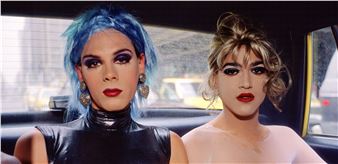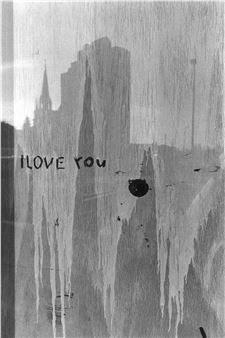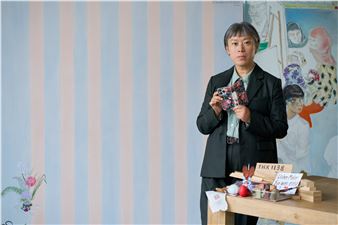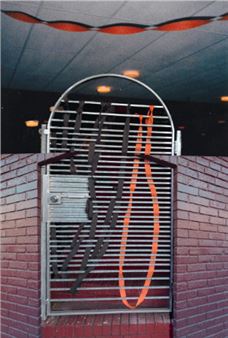Diane Arbus and Judith Joy Ross: Portraits
Exhibitions of selected works by Diane Arbus and Judith Joy Ross, two of the most influential American portrait photographers, are on view on the Second Floor.
Diane Arbus (1923-1971) is recognized as a pioneer of the вҖһnewвҖң documentary style, as presented alongВӯside the work of Lee FriedВӯlander and Garry Winogrand in the groundbreaking exhibition New Documents at the Museum of Modern Art New York in 1967. Her extensive Е“uvre includes relentlessly direct portraits of people who are relegated to exist on the fringes of social acceptance. On the other hand, Arbus shows supposedly ordinary people in a way that reveals the cracks in their public masks. Her images still remain confronting and the artist describes in them that it is ultimately impossible to leave oneвҖҷs own skin and live inside someone elseвҖҷs. The focus of the selection is on early works and photographs of pedestrians on the street, in the parks of New York, and people on the beach at Coney Island. Arbus combines a notion of documentary immediacy and an extraordinary sensitivity in her unique aesthetic. Until today, her work has been shown in numerous museum exhibitions. In 1972, a year after her death, Diane Arbus became the first American photographer whose work was featured at the Venice Biennial.
Since the early 1980s, the photographer Judith Joy Ross (born 1946 in Hazleton, Pennsylvania) has proВӯduced a remarkable oeuvre focusing on sensitive portraits of people at the heart of American society: school children and teachers, adolescents, soldiers, visitors at the Vietnam Veterans Memorial, or members of the U.S. Congress. Her portraits offer an aesthetic as well as a psychologically empathic approach to photoВӯgraphy. RossвҖҷs elaborate traditional way of working with a large format camera and tripod gives her the time to engage, so the act of photographing itself becomes an expression of attention for and appreВӯciation of the person vis-ГЎ-vis and gives room to an awareness of civic responsibility. Viewers are invited to imagine the outer and inner realities of the individuals: вҖңThe picture honors what this manвҖҷs life was at that moment. Even if it isnвҖҷt exactly clear what his situation is, but one can think that they know. One can guess. One can care about him. So that is why I photoВӯВӯgraph people. I found I could capture the emoВӯtionВӯal and poetic truth of someone.вҖң (J.J.R.) The artistвҖҷs photographs are collected by major interВӯnational institutions, including the Metropolitan Museum of Art, the Museum of Modern Art New York, the Victoria and Albert Museum in London and Museum Ludwig in Cologne. Ross was awarded a Guggenheim FellowВӯship and a National Endowment for the Arts. Following a retrospective exhibition at Mapfre, Madrid, RossвҖҷs work will be on view at Le Bal in Paris from mid-March, and subsequently at Fotomuseum Den Haag (The Hague).
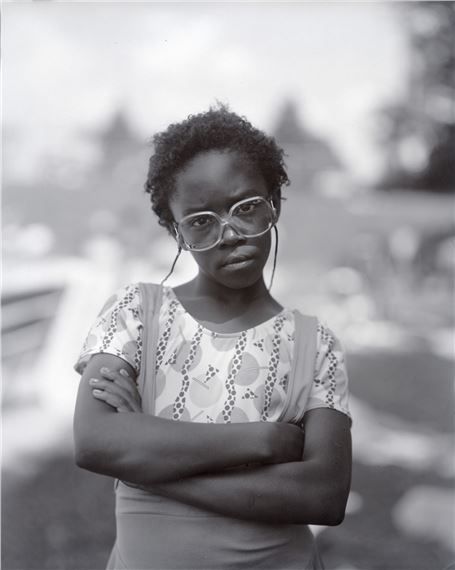
Recommended for you
Exhibitions of selected works by Diane Arbus and Judith Joy Ross, two of the most influential American portrait photographers, are on view on the Second Floor.
Diane Arbus (1923-1971) is recognized as a pioneer of the вҖһnewвҖң documentary style, as presented alongВӯside the work of Lee FriedВӯlander and Garry Winogrand in the groundbreaking exhibition New Documents at the Museum of Modern Art New York in 1967. Her extensive Е“uvre includes relentlessly direct portraits of people who are relegated to exist on the fringes of social acceptance. On the other hand, Arbus shows supposedly ordinary people in a way that reveals the cracks in their public masks. Her images still remain confronting and the artist describes in them that it is ultimately impossible to leave oneвҖҷs own skin and live inside someone elseвҖҷs. The focus of the selection is on early works and photographs of pedestrians on the street, in the parks of New York, and people on the beach at Coney Island. Arbus combines a notion of documentary immediacy and an extraordinary sensitivity in her unique aesthetic. Until today, her work has been shown in numerous museum exhibitions. In 1972, a year after her death, Diane Arbus became the first American photographer whose work was featured at the Venice Biennial.
Since the early 1980s, the photographer Judith Joy Ross (born 1946 in Hazleton, Pennsylvania) has proВӯduced a remarkable oeuvre focusing on sensitive portraits of people at the heart of American society: school children and teachers, adolescents, soldiers, visitors at the Vietnam Veterans Memorial, or members of the U.S. Congress. Her portraits offer an aesthetic as well as a psychologically empathic approach to photoВӯgraphy. RossвҖҷs elaborate traditional way of working with a large format camera and tripod gives her the time to engage, so the act of photographing itself becomes an expression of attention for and appreВӯciation of the person vis-ГЎ-vis and gives room to an awareness of civic responsibility. Viewers are invited to imagine the outer and inner realities of the individuals: вҖңThe picture honors what this manвҖҷs life was at that moment. Even if it isnвҖҷt exactly clear what his situation is, but one can think that they know. One can guess. One can care about him. So that is why I photoВӯВӯgraph people. I found I could capture the emoВӯtionВӯal and poetic truth of someone.вҖң (J.J.R.) The artistвҖҷs photographs are collected by major interВӯnational institutions, including the Metropolitan Museum of Art, the Museum of Modern Art New York, the Victoria and Albert Museum in London and Museum Ludwig in Cologne. Ross was awarded a Guggenheim FellowВӯship and a National Endowment for the Arts. Following a retrospective exhibition at Mapfre, Madrid, RossвҖҷs work will be on view at Le Bal in Paris from mid-March, and subsequently at Fotomuseum Den Haag (The Hague).

 ARTISTS
ARTISTS








